- Scope of 500kV station construction and installation work.
- Technical configuration 3×600MVA, GIS/AIS and SCADA selection.
- Typical construction volume and line connection.
- Applicable TCVN/IEC/IEEE standards and ratings.
- Technical-legal risks and timeline management 18–36 months.
- Legal documentation, trial operation and maintenance.
This content focuses on a comprehensive package estimate for a 500kV substation with a total capacity of 1800MVA, using a typical configuration of three 600MVA 500/220kV transformers. The scope includes infrastructure construction, transformer installation, GIS/AIS, SCADA, metering, auxiliary systems; line connection, grounding, lighting, fire protection; trial operation, and initial maintenance. Standards applied are TCVN, IEC, IEEE; pricing levels set by the Ministry of Construction/Ministry of Industry and Trade (referring to Pricing Level 36 GXD). Discusses technical risks, timeline of 18–36 months, legal (investment approval, EIA, contracts), major auxiliary equipment, operation, and maintenance. References are made to 500kV 1800MVA projects approved/upgraded in Vietnam such as Long An, Dong Nai, Dak Nong, Tay Ha Noi, Hoa Binh.
Scope of 500kV station construction and installation work.
The comprehensive package estimate for the 1800MVA 500kV substation covers the entire workflow from infrastructure construction to trial operation. The scope includes foundational works, internal roads, control house, grounding, lighting, and firefighting systems for the 500kV substation. Installation of 600MVA transformers (500/220kV), GIS or AIS switchgear, SCADA system, metering devices, and auxiliary equipment. Completing the high-voltage line connections to the station ensures stable operation through initial trial operation and maintenance. This foundation is key in effectively estimating a 500kV substation while meeting current technical and safety regulations.
Scope of construction and installation: overall deployment framework
The scope of construction and installation for a 500kV station encompasses a series of tasks from infrastructure, equipment installation to line connections and trial operation, organized according to technical and safety standards in the electrical sector.
Civil infrastructure and auxiliary systems
- Execute foundation piling for major equipment placement like large transformers and switchgear assemblies (GIS/AIS), ensuring structural load bearing and long-term project stability [1][4][5][6].
- Pour concrete foundations according to technical design, optimizing durability for heavy equipment mass, minimizing vibrations and misalignment during 500kV substation installation [1][4][5][6].
- Construct internal roads to accommodate safe, continuous equipment transportation, installation, and maintenance [1][4][5][6].
- Build control and management houses, conference rooms; ensure concentrated technical monitoring and work infrastructure [1][4][5][6].
- Implement a comprehensive grounding system to control step and touch voltage, protecting personnel and equipment in case of fault [1][4][5][6].
- Install lighting for night operations and maintenance, ensuring visibility and safety [1][4][5][6].
- Deploy substation firefighting systems including fire extinguishers, automatic fire alarms, and firefighting equipment to meet current safety standards [1][4][5][6].
Main equipment installation and system configuration
- 600MVA transformers (500/220kV) or larger capacity units as operation requires; core in voltage transformation, positioned on foundations according to the technical site plan [1][3][5].
- SF6 gas-insulated switchgear (GIS 500kV) or air-insulated switchgear (AIS) to perform switching operations according to station layout; choice of GIS/AIS based on environmental conditions, technical requirements, and station scale [1][3][5].
- Implement substation SCADA system for automatic monitoring and control, supporting operational management and fast fault detection [1][3][5].
- Supplement the electrical measurement system for monitoring transmission flow, supporting maintenance work, and energy business transactions [1][3][5].
- Install auxiliary equipment: capacitor banks, current transformers, voltage transformers, and protective devices supporting stable operation of the 500kV substation [1][3][5].
Connection, testing, and trial operation
- Complete high-voltage line connections to the station, complying with technical requirements for safe and continuous transmission [1][7].
- Conduct tests: insulation pressure, grounding resistance, check transformer oil level (if any), and trial run equipment before operational start [1][7].
- Organize trial operation and initial maintenance to promptly identify and address technical issues, readying for stable exploitation of the 500kV substation [1][7].
Technical and safety requirements throughout the project’s lifecycle
- Adhere to national technical standards for station construction, IEC 60076 standards for transformers, and current power standards [3][4][9].
- Ensure labour safety and fire prevention during construction – operation; fully integrate substation firefighting systems according to regulations [3][4][9].
- Materials and equipment meet quality standards: concrete, steel, silicon iron, transformer oil, insulation paper sourced from high-standard markets such as Japan, Germany, Sweden [3][4][9].
- Choose station placement based on load center calculations to minimize voltage drop loss along lines, optimizing operational efficiency of the 500kV substation [3][4][9].
Comprehensive estimate and management execution
The comprehensive estimate spans all work scopes from infrastructure to equipment installation, line connection to trial operation – initial maintenance; forming the basis for effective budget planning, investment reporting, and construction management for the 500kV substation [1][3][4][5].
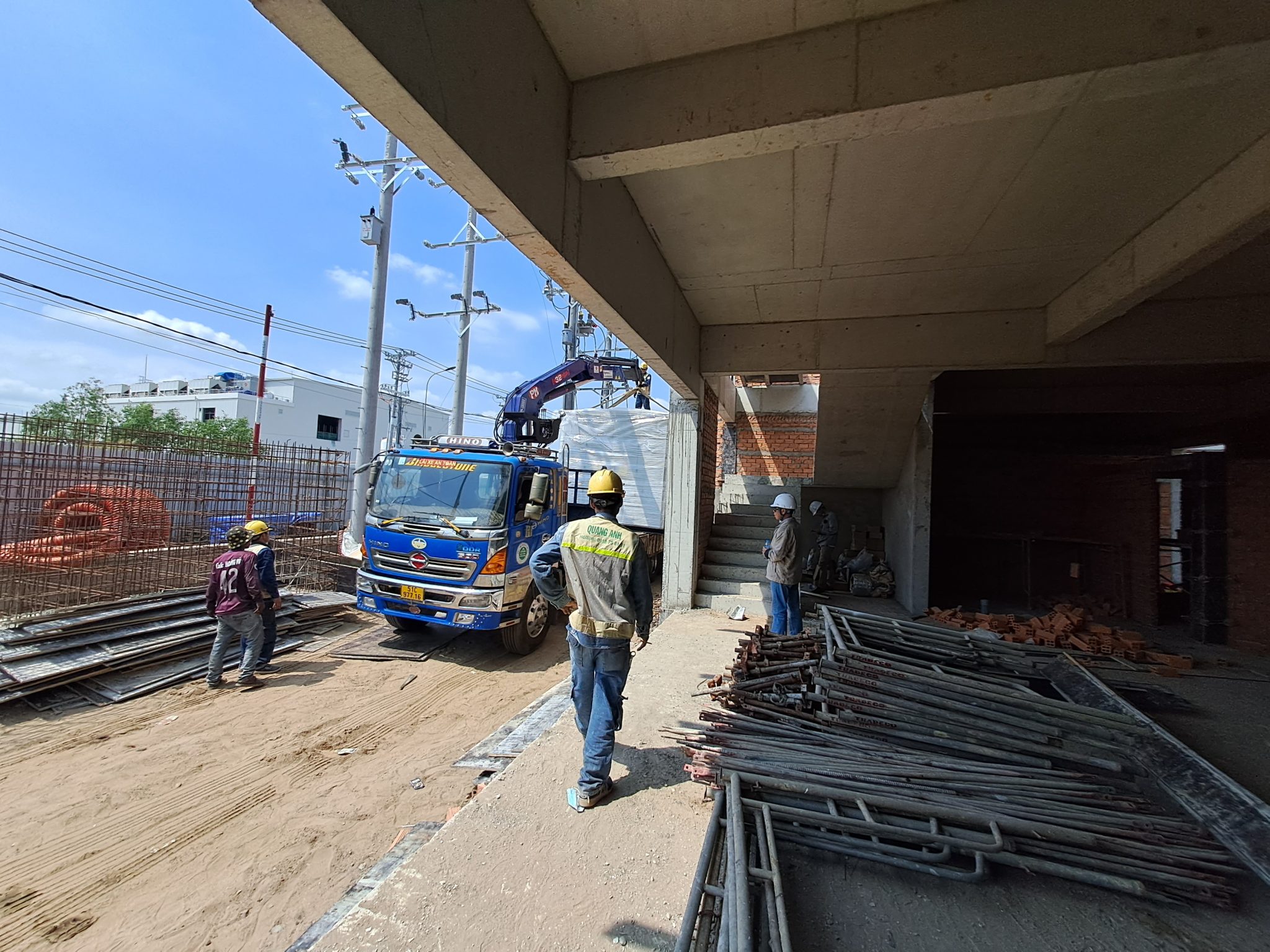
Technical configuration 3×600MVA, GIS/AIS, and SCADA selection.
The comprehensive package estimate for 1800MVA 500kV substation implements a typical configuration: 3×600MVA, voltage level 500/220kV, with transformer types (oil or dry) based on project conditions. GIS 500kV is chosen for limited area or harsh environments; AIS is preferred when space allows wider installation flexibility. The station’s protection-control system, integrated within SCADA, allows remote operation, condition monitoring, overcurrent and overvoltage protection, and provides redundancy. Decisions made in configuration are crucial inputs in estimating 500kV substations and organizing heavy equipment transport.
Existing data scope and application limitations
Current search results primarily lead to design regulation documents from the Vietnam Electricity Group for 220kV–500kV substations. These documents offer some basic information on the configuration and design standards related to the 500kV Substation. However, the detailed technical decisions for GIS 500kV or AIS 500kV, as well as SCADA IEC 61850 integration and 500kV Relay Protection scope, are not detailed in the accessed sources.
Data currently lacking sufficient info
- Detailed comparisons between GIS 500kV and AIS 500kV technology within a 1800MVA 500kV substation using 3×600MVA configuration.
- Technical analysis regarding area conditions, environment, reliability, operation, and maintenance for the 500kV Substation.
- Specific technical parameters about single-line diagrams and detailed standards according to IEC/IEEE.
- Architecture of the SCADA/DMS systems with protocols such as SCADA IEC 61850 and IEC 60870-5-104.
- Information on 500kV Relay Protection (e.g., overcurrent, distance, differential, earth fault, overvoltage).
- Details on transporting – installing 600MVA transformers and organizing construction.
- Analysis of applicable bus configurations for 500kV level (double busbar, breaker-and-a-half, ring bus).
- Testing, acceptance, and periodic maintenance requirements.
Sources needed to complete datasets
- Technical documents from technology providers (to have descriptions and system requirements for GIS 500kV, AIS 500kV, and related components of the 500kV Substation).
- International standards IEC/IEEE (including guidelines for SCADA IEC 61850 implementation and standards related to protection – control).
- Design guides from specialized units in the electrical system field.
- Research reports from international power organizations to reference practical implementation and testing – acceptance frameworks.
Information requirement structure suggestions
- Technology selection criteria framework: clarify GIS 500kV and AIS 500kV comparison criteria according to project conditions (area, environment, operation – maintenance, reliability).
- Technical scope definition: single-line diagrams, IEC/IEEE standards application for the 500kV Substation.
- Control – protection system architecture: SCADA IEC 61850 model, link protocols, device hierarchy, and list of necessary 500kV Relay Protection functions.
- Logistics – construction requirements: transportation scope, 600MVA transformer installation, and construction organization plans.
- Testing, acceptance, maintenance framework: test items and periodic maintenance schedules according to standard practices.
Note on information usage
The detailed professional contents mentioned above are not yet present in retrieved documents; to gain specific descriptions and parameters, further reference is needed to technical supplier documents, international IEC/IEEE standards, specialized design guides, and reports from international power organizations, as referred to in the search results.

Typical construction volume – installation and line connection.
A comprehensive 1800MVA 500kV substation estimate must clearly measure volumes: foundation piles, concrete bases, internal roads, control houses, and auxiliary works. Installing 600MVA transformers involves significant lifting – moving mass; setting busbars, device cabinets, isolators, circuit breakers, current, and voltage transformers for GIS/AIS. 500kV line connection tasks may extend from tens to over 100 km, influencing schedule and construction organization. These volumes form the basis for resource control in the 500kV station estimate and supply planning.
At 1800 MVA scale (typically with three 600 MVA transformers), the 500kV station requires comprehensive implementation from base – infrastructure, main GIS /AIS 500kV equipment installation to two-circuit 500kV line connection. Precise volume quantification and standard adherence are bases for controlling progress, quality, and safety.
Base volume and infrastructure
- Substation and concrete foundations: Reinforced concrete bases for transformer, breakers, isolators, GIS/AIS device, and pole mounts. Depending on geology, use centrifugal concrete piles or bored piles as per applicable standards for 500kV stations. Concrete bases about 200–300 mm thick, reinforced for durable load bearing and vibration damping, ensuring long-term stability of the transformer substation foundation.
- Internal roads: Cement concrete or asphalt pavement, approximately 4–6 m wide to accommodate the safe entrance of oversized equipment and cranes. Road structure designed for safe transformer and auxiliary equipment transport.
- Control houses and auxiliary constructions: Control houses standard 100–150 m², either concrete or prefab steel structures. Fully equipped with water systems, backup generators, security huts, maintenance equipment storage, arranged following substation 500kV safety corridors.
- Standards: Apply TCVN 9385:2012 for station design and foundation structure; IEC 61936 for high-pressure station design.
Main equipment installation: 600 MVA transformers and GIS/AIS 500kV
- 600 MVA transformer installation: Large lifting – moving mass, using cranes with lifting capacity from 100–200 tons upwards. Prepare flat foundation surfaces, evenly distribute load, secure stability during concrete foundation pouring, and align positions according to construction drawings. Transformer installation process requires strict step-by-step control to protect equipment.
- GIS/AIS 500kV assembly:
- Busbars: Use copper or aluminum, SF6 insulated; mounted with high precision fixings, minimizing vibration, ensuring good electrical contact.
- Device cabinets and modules: Transport/install by modules; check SF6 tightness, pressure tests; adjust switching, measuring, protection devices.
- Isolators, SF6 circuit breakers, CT/PT: Install according to technical procedure, integrate with control – protection systems. SF6 environments require strict adherence to electrical safety and fire prevention standards.
For the GIS 500kV assembly, tightness testing, pressure testing, and operational adjustment are mandatory milestones before synchronizing with the substation’s control – protection system. These tasks have direct interconnections with transformer foundation completion progress and transformer installation work.
500kV line connection: two-circuit
- Scale and construction organization: Line lengths range from dozens to over 100 km, requiring synchronization across segments to meet connection deadlines for 500kV lines. Overall planning prioritizes pole groundwork, followed by pole erection and stringing in sequence.
- Pole foundation: Precision execution of size and location; avoid standing -by to prevent affecting pole transportation and erection, thereby maintaining two-circuit construction rhythm.
- Conductors: Use large section ACSR, e.g., ACSR-795 or higher depending on the line’s power transmission capacity.
- Stringing and safety: Apply specialized equipment to control tension and sag; adhere to safety standards throughout the stringing – anchoring process, while coordinating progress with substation equipment installation.
- Progress-influencing factors: Terrain, climate, construction capacity, and synchronization level. Prepare contingency plans for adverse conditions, improving quality and safety management to limit interruptions on 500kV lines.
- Applied standards: QCVN 04:2009/BXD for high-voltage line construction; TCVN 4742:2012 for power transmission line design; IEC 60865 for 500kV line structures; complying with safety regulations of the Northern/Southern Electricity Corporation for two-circuit 500kV lines.
References and verification practices
- Operation – construction procedures for GIS 500 kV stations at projects like Ialy expansion, Lai Chau: focus on operating techniques for breakers, isolators, GIS drive cabinets and tightness tests.
- Optimized schedule double-circuit construction model: no pole foundation waiting, organize supply – assemble rhythmically.
- Testing – calibrating materials, 500 kV substation equipment, and 500 kV lines at specialized power testing centers.
- Apply reinforced concrete foundation design guides for 500 kV stations from EVN’s 110–500 kV grid design literature.
Overall, the synchronized deployment of infrastructure tasks – substation foundation, transformer installation, and GIS 500kV/AIS assembly, alongside two-circuit 500kV line connection according to standards is the key to ensuring quality and schedule for the 500kV substation.
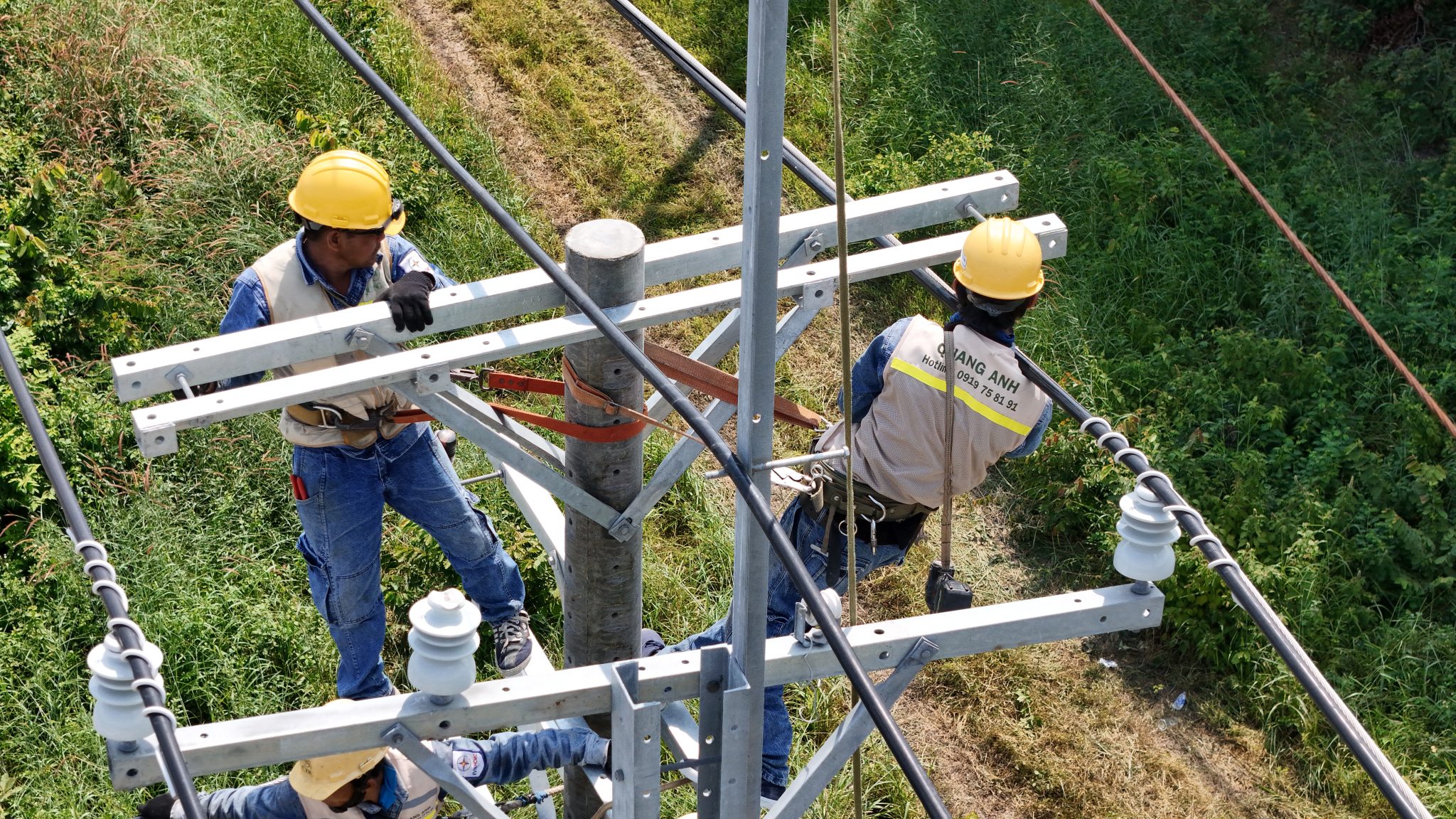
Applicable TCVN/IEC/IEEE standards and ratings.
The comprehensive estimate for the 1800MVA 500kV substation adheres to TCVN, IEC, IEEE standards for design, installation, and operation. Cost norms for labor, materials, and machinery are governed by the Ministry of Construction and Ministry of Industry and Trade; Pricing Level 36 GXD can be referenced for 500kV substation installations. Quality of 600MVA transformers, GIS 500kV systems, and substation SCADA must comply with EVN regulations and Vietnamese law. Standardization ensures legal compliance and serves as a basis for quality – volume control in the 500kV substation estimate.
Application scope within the 500kV substation estimate
The focus is on a comprehensive package estimate for an 1800MVA capacity substation at a 500kV voltage level, with a unified compliance requirement from design, installation to operation stages. The goal is to ensure each item within the station scope adheres strictly to the current standards and ratings to meet both legal and technical consistency requirements.
System of technical standards
The standard set includes TCVN and international standards IEC and IEEE. These standards are used throughout the station’s lifecycle: from describing design technical requirements, organizing installation, to operational requisites. Compliance with TCVN/IEC/IEEE facilitates synchronization of technical criteria for devices and systems, laying the groundwork for estimate deployment and management of items under a unified standard.
Cost standards according to regulatory authorities
Cost norms for labor, materials, and machinery follow regulations from the Ministry of Construction and Ministry of Industry and Trade. These standards form the basis for building, controlling, and reviewing cost items within the comprehensive package estimate. In the case of 500kV substation installation, Pricing Level 36 of GXD can serve as a suitable reference for work scope particularities at this voltage level.
Equipment and quality requirements
The three core equipment groups within the station must meet quality requirements regulated by EVN and Vietnamese law, including: 600MVA transformers, GIS 500kV systems, and substation SCADA. Applying these quality requirements ensures technical conformity of devices, serving as a basis for verification of compliance in both estimates and implementation stages.
Standardization for legal and control management
Unified application of TCVN/IEC/IEEE along with regulatory cost norms systematizes the legal grounds of the 500kV substation estimate. Thus, quality and volume control within the estimate are executed on a shared platform, aiding tracking, comparison, and risk management during execution. This approach ensures all substation items are adequately quantified and controlled in line with current legal requirements.
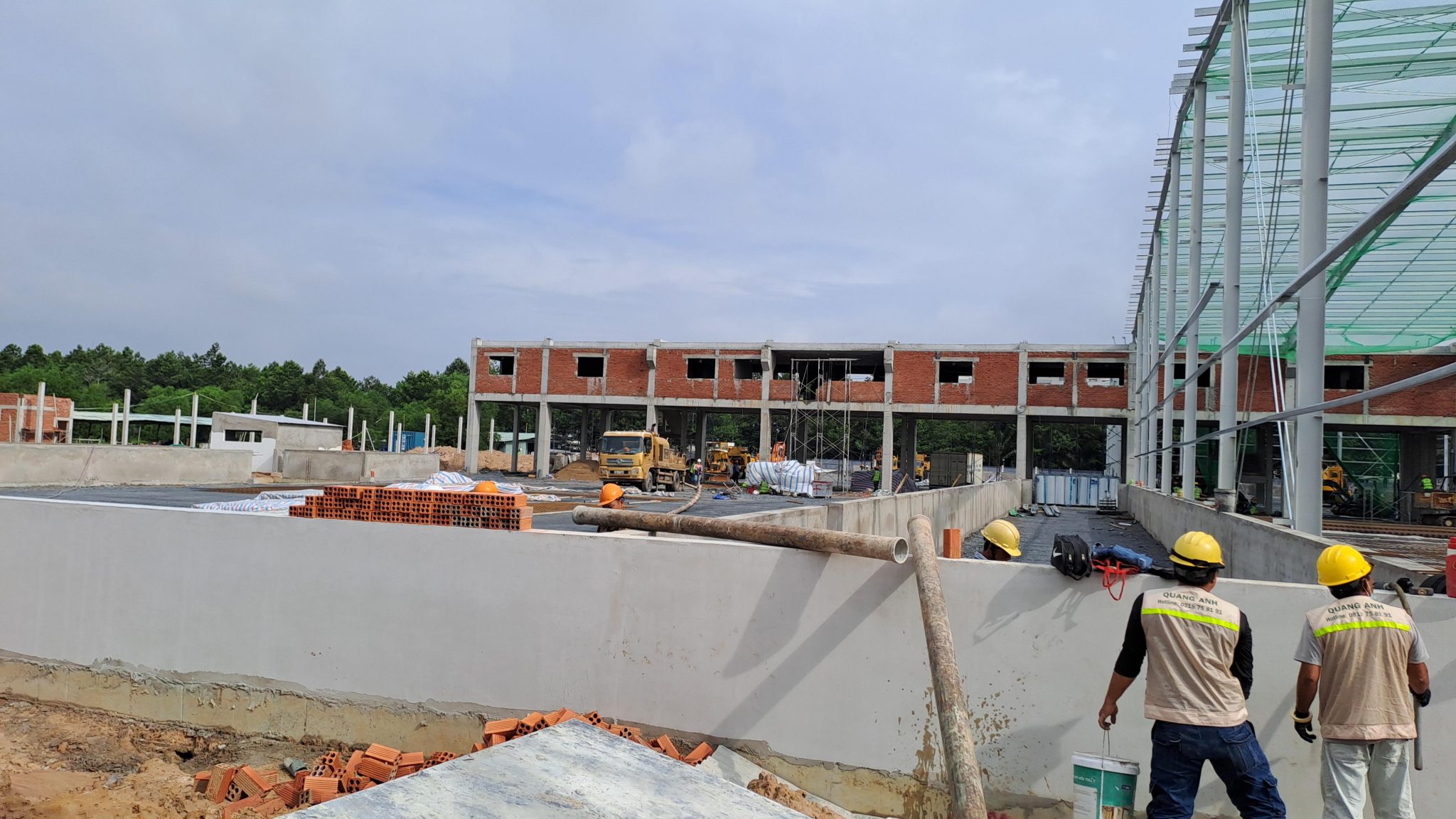
Technical-legal risks and timetable management for 18–36 months.
The comprehensive package estimate for an 1800MVA 500kV substation must anticipate installation risks for high-load transformers and complex GIS, along with schedule risks stemming from approvals, drawing amendments, and acceptance processes. Weather conditions, labor safety, and deviations in technology/import equipment can impact plans. Legally, compliance with land, environmental, and investment approval requirements is essential. The overall timetable usually spans 18–36 months, including design, approvals, heavy equipment transport, foundational construction, installation, trial runs, and handover; progress heavily depends on land procedures and equipment supply contracts, demanding strict risk management within the 500kV substation estimate.
18–36 months schedule framework and key control points
- Design and investment approval (3–6 months): Complete investment dossiers, feasibility studies, appraisals; implement basic and detailed design phases. This stage lays the groundwork for construction schedule of the substation and optimizes project risk management.
- Site preparation and permitting (3–6 months): Land clearance, acquisition, legal land handling; acquire construction, environmental, fire safety, labor safety permits for the 500kV substation.
- Heavy equipment transport (2–4 months): Organize transport flow for 1800MVA transformers, GIS 500kV and major equipment; control road infrastructure, bridges, lifting methods.
- Foundational works and build installation (6–12 months): Excavation, concrete pouring, grounding setup, control house building; install transformers, GIS, control, protection, and SCADA systems for the 500kV substation.
- Trial operation, acceptance, handover (2–4 months): Organize testing, quality checking, standard-compliant acceptance; hand over operations and complete legal documentation.
Key technical risk groups
Transformer installation and operation for 1800MVA
- Heavy equipment transport and lifting: Masses of hundreds of tons demand suitable transport routes, specialized cranes, and skilled technicians; mistakes can cause damage while positioning transformers.
- Overload, overheating, explosion risks: Design or operational errors cause overheating, insulation degradation, oil fires, and explosion hazards.
- Insulation material damage: Material aging due to high temperature and continuous operation shortens insulation system lifespan.
- Partial discharge: Arcing, short circuits can release toxic gases, threatening safety and adjacent equipment.
GIS 500kV installation
- SF6 gas leakage: Environmental impact, insulation capability reduction, and health risks if not controlled.
- Installation accuracy and tightness: High demands on gas tightness; misalignment easily leads to short circuits and arcing.
- Routine maintenance and checks: Require specialized equipment and a well-trained team to ensure stable GIS 500kV operations.
Technology/import equipment discrepancies
- System compatibility: Imported equipment might be incompatible with existing configurations, leading to complex design modifications and integration.
- Supplier dependence: Possibility of late deliveries, spare parts shortages, limited technical support affecting substation construction timeline.
- Warranty – Maintenance: Difficulty with repairs, replacements post-warranty period.
Legal and management risks
Approval and investment sanction
- Time extensions: Administrative procedures and regulatory changes can prolong the approval process, impacting the project risk management workflow.
- Regulatory/law updates: Investment or environmental policy adjustments necessitating plan updates.
Drawing modifications and acceptance
- Design change emergence: Based on actual conditions, technology requirements, or government authority.
- Acceptance challenges: Risks of missing documentation, unmet technical standards, or finding defects during construction.
Land and environmental matters
- Land acquisition delays: Challenges in land recovery, compensation, disputes delaying substation construction milestones.
- Environmental and safety requisites: Compliance with waste disposal, noise, emission management; concurrently meeting fire and labor safety standards for 500kV substations.
Timetable risks and project risk management requirements
Weather and labor safety
- Storms, floods: Affect excavation, equipment transportation, outdoor installations.
- Heat, drought: Impact concrete quality and construction site safety.
- Accidents and technical workforce shortages: Heavy equipment installation, high-altitude work, high voltage exposure; peak season lacks skilled engineers and workers.
Dependence on land and equipment contracts
- Delayed land clearance: Stalling construction tasks.
- Delayed equipment delivery: Directly impacting installation, trial runs, and acceptance of 500kV substations.
Cost – quality – contingency management
- Large-scale estimate: Requiring comprehensive control over costs, progress, and quality for projects using 1800MVA transformers and GIS 500kV.
- Contingency planning: Preparing strategies for scenarios like delay, cost overrun, or technical faults – a focus for project risk management.
Given the scope, complexity, and strict compliance required, early identification of technical risks with 1800MVA transformers and GIS 500kV, alongside legal – procedural risks, provides a basis for proactive control over the substation construction schedule within an 18–36 month framework for 500kV substations.
Reference sources
- https://thicongtrambienap.com/nhung-rui-ro-khi-su-dung-tram-bien-ap-cong-suat-nho-cho-nha-may-lon/
- https://eemc.com.vn/su-co-may-bien-ap-500kv-cua-trung-quoc-mien-trung-mat-dien-dien-rong.html
- https://www.npt.com.vn/d6/vi-VN/news/Su-co-MBA-500-kV-Hiep-Hoa-khong-anh-huong-truyen-tai-dien-he-thong-500kV-Bac-Nam–6-192-1388
- http://evni.vn/du-an/tram-bien-ap-500kv
- https://baomoi.com/buoc-tien-trong-ung-dung-khoa-hoc-cong-nghe-quan-ly-van-hanh-luoi-dien-truyen-tai-vung-song-nuoc-c50653292.epi
- https://www.npt.com.vn/d6/vi-VN/news/Tram-bien-ap-500kV-Dak-Nong-duoc-nang-cong-suat-len-1800MVA-0-194-10060
- https://baochinhphu.vn/no-luc-dua-du-an-tba-500-kv-quang-tri-va-duong-day-dau-noi-ve-dich-dung-hen-10225102714400649.htm
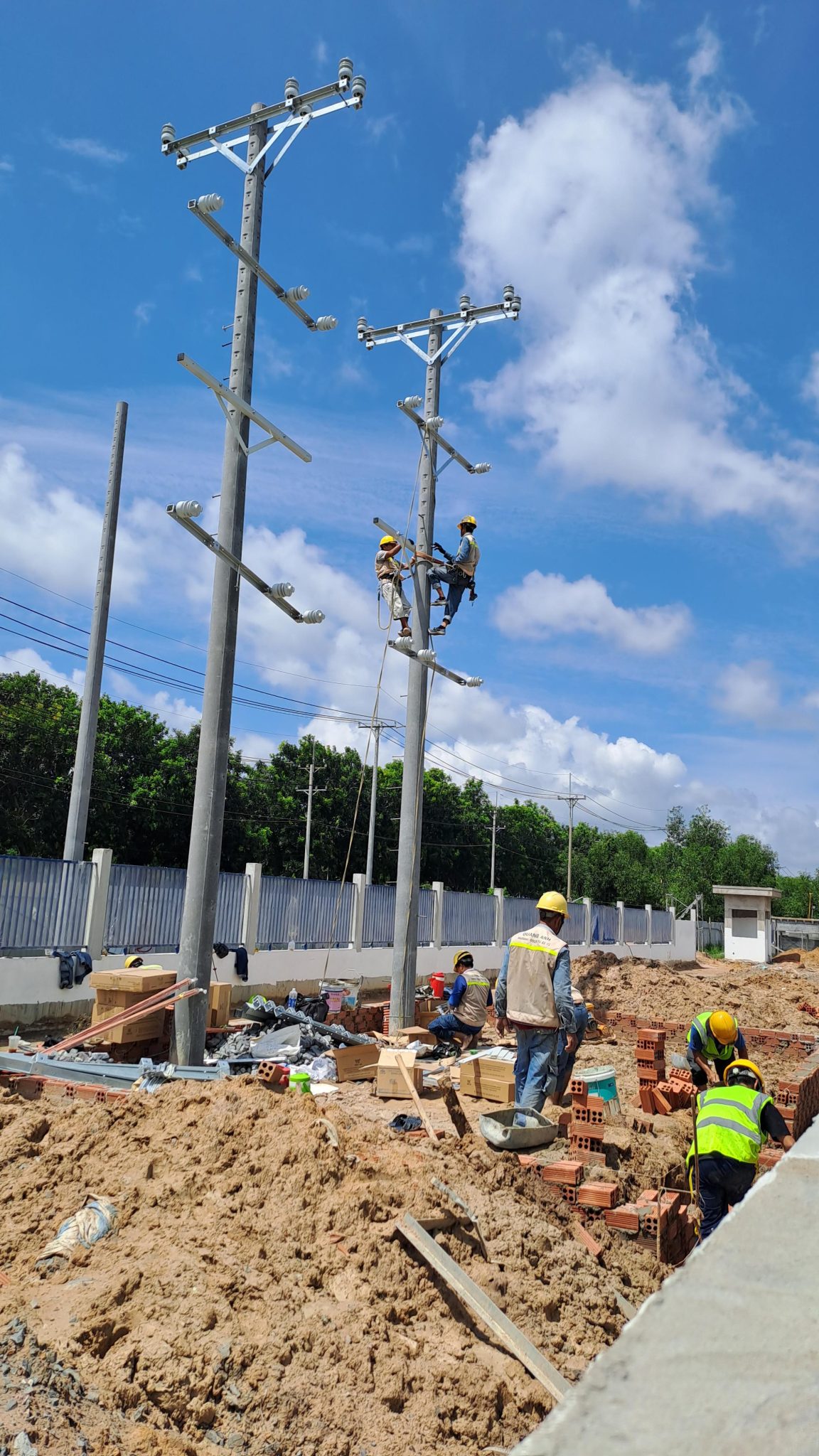
Legal documentation, trial operation, and maintenance.
The comprehensive package estimate for an 1800MVA 500kV substation must be linked with legal documentation: local investment policy approvals (as in Long An, Dong Nai), construction permits, environmental impact assessments, and labor safety; electricity purchase agreements, equipment supply, construction contracts; investment efficiency reports, compliance with land law and project management by EVN/Ministry of Industry and Trade. The operation – maintenance phase includes local or central SCADA substation management, routine checks of circuit breakers, 600MVA transformers, sensors, cooling and grounding systems; performing preventive maintenance, scheduled repairs, and training staff for incident management.
Legal framework and investment preparation
The legal scope for a 1800MVA scale substation at a 500kV voltage level follows a three-tier mechanism (central, local, sectoral). Implementation is emphasized through the Prime Minister’s inspection of the Thanh Hoa 500 kV substation project on June 22, 2024, ensuring the planned electrical commissioning, underscoring the strategic nature of these high-voltage projects in dry season energy security [3].
Legal documents and initiation procedures
- Legal documents: business/enterprise registration licenses, tax code, legal representative ID/passport; land-use rights/land lease contracts. Minimum three notarized copies with a validity of no longer than three months [1].
- Electricity procurement application: submit to local power utilities or EVN Business Department, accompanied by documents verifying location and purpose of electricity use at the 500kV station construction site [1].
- Network connection application under Ministry of Industry and Trade: application form (with file), schematic post-connection diagram, technical documentation (600 MVA transformer, 500 kV circuit breaker, protection system), projected schedule, economic – technical data [2].
- Sector collaboration: agreement consistent with Power Development Plan (Department of Industry), agreement on pole/station position and corridor route (Department of Planning – Architecture/Department of Transport/Building Department), construction permits according to the provincial/municipal People’s Committee [2].
- Environmental: submit EIA report and environmental protection plan, present to district/communal People’s Committees, Industrial Park/Export Processing Zone/Economic Zone Management for confirmation within authority [2].
- Contracts: electricity purchase agreement with EVN/local utilities, equipment supply contracts (600 MVA transformer, 500 kV circuit breaker, control – protection), and construction contracts [1][2].
- Land and infrastructure: comply with the Land Law, land clearance, seek permission for road excavation if underground/related infrastructure is present [1].
- Labor safety: develop and implement safety plans during construction, operation, and maintenance according to current regulations.
Trial operation, protection integration, and station SCADA
The trial schedule is staged from factory to site, followed by control – protection and communication integration.
FAT/SAT and standard testing
- FAT at factory: 600 MVA transformers load test, AC characteristics, loss, noise; 500 kV circuit breakers operational mechanism, vortex current cutting capacity inspection.
- SAT on site: acceptance of installed items cumulatively, including electrical devices, control and protection systems.
- Standard testing (Type Test) with certifications from specialized labs: overvoltage capacity, short circuit withstand, insulation, performance – loss.
Protection – control synchronization
600 MVA transformers in the full 1800 MVA capacity require tight synchronization between:
- Transformer protection relays (foreign water protection, internal protection),
- Line protection (overload, short circuit), overvoltage protection,
- Remote set relay for flexible protection reconfiguration [4].
SCADA/EMS configuration and remote control
- Substation SCADA: data collection from sensors (temperature, pressure, current, voltage), remote device management (switches, load cutting), threshold alerts, historical data storage for analysis – reporting.
- Integrated EMS: manage power flow, optimize operations, foresee demand and provide recommendations.
- Local operation mode: hand operations, local signal use, manual parameter recording in initial stages.
- Transition to remote control: apply IEC 61850 for communication within station for joint control – protection – metering, reducing wiring, enhancing reliability and response time; use protocol 60870-5-104 for station-control center communication, supporting control commands, status/measurement data transmission and fast alarm response [4].
Industrial network security
- Firewall setup to protect SCADA station network against unauthorized access.
- Encrypt data transmissions, authenticate users, regularly check and update anti-malware software.
Transformer, circuit breaker, and auxiliary system maintenance
Maintenance strategy combining periodical – preventive – scheduled repairs to maximize 500kV station availability.
500 kV Circuit Breaker (SF6)
- Weekly: Check SF6 gas pressure, operational mechanism status; record remote control parameters.
- Monthly: Run protection – automation tests, inspect UPS and communication devices.
- Annually: Open mechanism inspection, cleaning, replace worn parts (certificates, spring), realign connections, adjust parameters.
600 MVA Transformer
- Daily: Monitor oil temperature using shell thermometers (≤ 65°C normal; ≤ 75°C overload), main/auxiliary tank oil levels, cooling fan activity, oil leakage; document records.
- Monthly: Inspect exterior, wire connections, automatic oil sampling device, protective devices (pressure relief valve, temperature alarm).
- Annually: Conduct oil dielectric test; measure winding insulation resistance (megohm meter), check transformer turn ratio (TTR), oil acidity, water content.
- 3-5 year cycle: FRA (Frequency Response Analysis) deep inspection of winding; open for internal inspection if necessary.
Sensors – Measurement
- Temperature sensors: Quarterly inspections, replace if deviation > 1°C or defective.
- CT: Annually test insulation and accuracy.
- VT: Annually test insulation and transform ratio.
Cooling system
- Cooling fans: Daily function checks; quarterly bearing inspections; lubricate per recommendations; replace motors when malfunctioning.
- Air coolers: Clean surfaces semi-annually; inspect water pipes (if any) to assure smooth flow.
Grounding system
- Annually: Ground resistance checks (generally < 1 Ω for 500 kV stations), inspect for corrosion, anchor integrity, re-treat connections when needed.
- 3–5 year routine: Excavation for detailed check and improvements if resistant values fall short.
Periodic testing
- Oil dielectric: Electrical endurance ≥ 30 kV; acid number < 0.3 mgKOH/g; water content < 50 ppm.
- DGA (dissolved gas analysis): Hydrogen, Oxygen, Nitrogen, Methane, Ethane, Ethylene, Acetylene analysis annually or upon anomalies.
- Partial discharge (PD): Annually or every 3 years for early insulation degradation detection.
Preventive maintenance and planned repairs
- Preventive maintenance: Replace by lifespan/manufacturer’s recommendation, based on operational – maintenance history and test outcomes (e.g., breaker certificates after 10–15 years or 100,000–200,000 operations).
- Major transformer repairs (10–15 years): Disassemble, inspect windings/core/yoke, repair/replace, clean, oil dry, reassemble, and test.
- Breaker repairs (10-year or 100,000–200,000 operations): Disassemble, clean, replace SF6 gas if purity compromised, replace contact certificates upon wear, re-tune parameters.
Spare parts – Training – Incident Management
- Spare stockpile: 500 kV breaker contact certificates, operation springs, fan bearings, oil filters, transformer spare oil, control – protection electronics; manage inventory via detailed recording, regular inventory, ensure storage conditions and remove expired materials.
- Training: Initial (equipment knowledge – safety – maintenance procedures – basic incident response), annual periodic (regulation updates, practice, assessment), specialized (DGA, FRA, PD, SCADA/EMS, network security).
- Incident management: With transformers (overheating – cooling system check; oil leak – cease operation, repair; PD – detailed testing and threshold assessments), breakers (failure to open/close – power source and mechanism check, manual handling if required; gas leak – shell inspection, replacement potential), SCADA/remote control (switch to local, network – communication device check, restore from backup).
A strict legal foundation for substations, an integration trial timeline compliant with IEC 61850 and 60870-5-104, alongside cyclic transformer, breaker, and auxiliary system maintenance ensures safety – reliability – efficiency throughout the 500kV station’s lifecycle [1][2][3][4].

The comprehensive package estimate for an 1800MVA 500kV substation consolidates construction scope, configuration 3×600MVA, GIS/AIS and SCADA selection, adhering to TCVN/IEC/IEEE standards and ratings. This approach reduces technical – legal risks, maintains an 18–36 month schedule, and guarantees operational – maintenance readiness. It is fundamental to optimizing investment efficiency and meeting grid connection demands at the 500kV level.
Contact us for implementing Comprehensive Package Estimate for a 1800MVA 500kV Substation according to project standards and timelines. QuangAnhcons – Hotline: +84 9 1975 8191.
QuangAnhcons provides services for creating and implementing Comprehensive Package Estimates for 1800MVA 500kV substations as outlined: infrastructure construction, 600MVA transformer installation, GIS/AIS, SCADA, line connection, initial trial operation – maintenance. The service complies with TCVN/IEC/IEEE, standards from the Ministry of Construction/Ministry of Industry and Trade (referring to Pricing Level 36 GXD), managing technical – legal risks and an 18–36 month schedule, satisfying legal documentation and operational station requirements.
– Image Metadata:

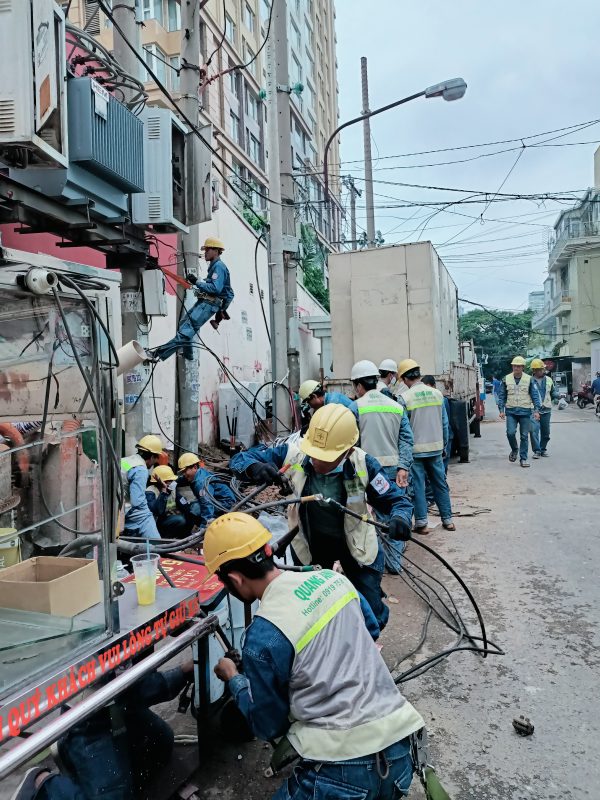
Related Posts
Comprehensive Package Estimate for a 1800MVA 500kV Substation: Scope, Configuration 3x600MVA, Standards and Timeline Management
An overview of the 1800MVA 500kV substation estimate: construction scope, configuration 3x600MVA, GIS/AIS, SCADA, standards, [...]
Nov
Factory Electrical Systems: Comprehensive Design and Implementation Guide
Discover the detailed and safe process of factory electrical systems design and implementation. [...]
Oct
Blueprints Required for Factory Construction Permits
Discover the necessary blueprints in factory construction permit applications, from floor plans to electrical and [...]
Oct
What Are the Requirements for a Factory Construction Permit? A Comprehensive Guide
Explore the documentation and steps needed to secure a factory construction permit for streamlined project [...]
Oct
Factory Construction Permit Procedures in Vietnam: Essential Guidelines and Documents
Learn the procedures for securing a factory construction permit in Vietnam, focusing on document preparation [...]
Oct
Key Steps in the Factory Construction Process
Discover the essential steps and requirements for building factories. [...]
Oct
Comprehensive Electrical Substation Solutions by Quanganhcons
Discover the cutting-edge electrical substation solutions offered by Quanganhcons for industrial applications. [...]
Oct
Investment Costs for a 1MWp Solar Power System and Influencing Factors
Explore the investment costs for a 1MWp solar power system in Vietnam and the influencing [...]
Sep
QuangAnhcons: Elevating Wind Energy Solutions
Explore QuangAnhcons' leadership in wind energy and renewable solutions in Vietnam. [...]
Sep
Electrical Contractor Strategies at Becamex Industrial Park
Discover the strategic advancements and partnerships of the electrical contractor at Becamex Industrial Park. [...]
Sep
Investment Insights for 1MW Wind Energy in Vietnam: Costs and Opportunities
Discover the detailed analysis of costs and opportunities for investing in 1MW wind energy projects [...]
Sep
Advanced Electrical Installation Solutions by QuangAnhcons
Explore advanced electrical installation solutions and modern technology with QuangAnhcons. [...]
Sep
Enhancing Industrial Electrical Services with Quanganhcons
Discover Quanganhcons' expertise in industrial electrical services, offering efficient and sustainable power systems. [...]
Sep
Comprehensive MEP Solutions by QuangAnhcons: From Design to Maintenance Excellence
Discover optimal MEP solutions with QuangAnhcons, dedicated to excellence from design through maintenance. [...]
Sep
Comprehensive Electromechanical Contracting Solutions by QuangAnhcons
Explore QuangAnhcons' comprehensive services for efficient and safe energy system solutions. [...]
Sep
QuangAnhcons: Empowering Industrial Energy Solutions
Discover how QuangAnhcons delivers optimal industrial EPC solutions. [...]
Sep
Effective Industrial Construction Management and Execution
Optimize your industrial projects from design to execution with our contractor services. [...]
Sep
QuangAnhcons: Pioneers in M&E and Renewable Energy Solutions
Discover QuangAnhcons' innovative M&E services and renewable energy solutions. [...]
Sep
QuangAnhcons: Expertise and Outstanding Services in the Electrical Sector
Discover the unmatched expertise and services of QuangAnhcons, setting superior standards in the electrical contracting [...]
Sep
QuangAnhcons: Innovation and Precision in Industrial Electrical Contracting
Discover QuangAnhcons, a top contractor offering superior electro-mechanical solutions. [...]
Aug